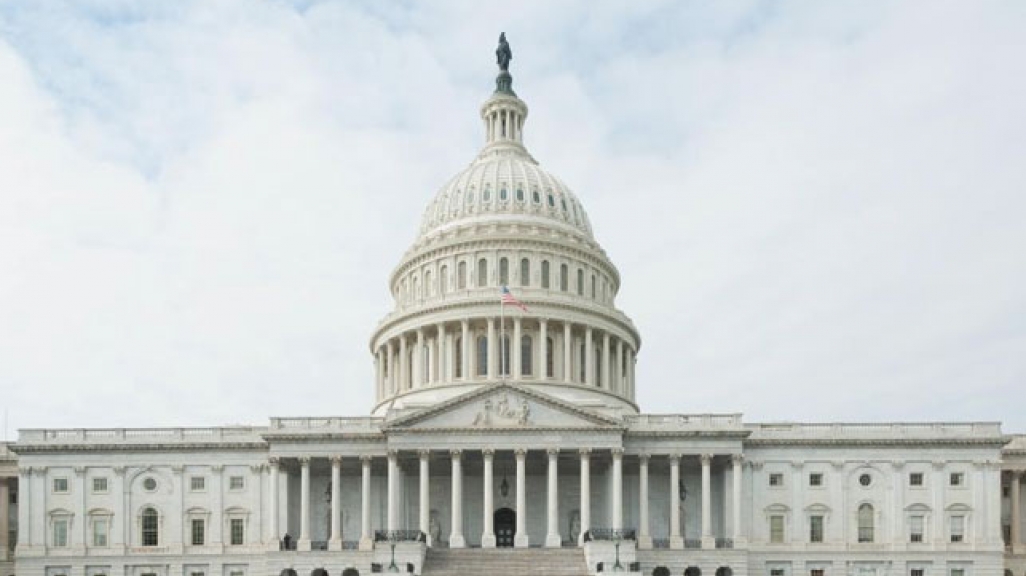Congressional Testimony: Energy Security Opportunities in Latin America and the Caribbean
Congressional Testimony: Energy Security Opportunities in Latin America and the Caribbean
Developing effective regional markets is vital to U.S. interests, explains COA's Eric Farnsworth in testimony to the House Committee on Foreign Affairs' Subcommittee on the Western Hemisphere.
ENERGY SECURITY OPPORTUNITIES IN LATIN AMERICA
AND THE CARIBBEAN
HEARING BEFORE THE HOUSE COMMITTEE ON FOREIGN AFFAIRS
SUBCOMMITTEE ON THE WESTERN HEMISPHERE
APRIL 11, 2013
ERIC FARNSWORTH
VICE PRESIDENT, COUNCIL OF THE AMERICAS
***** As Prepared for Delivery *****
Good afternoon, Mr. Chairman and members of the Subcommittee. It is a privilege to be with you today. As you know, the Council of the Americas (“Council”) is a leading policy voice on Latin America, the Caribbean, and Canada. For almost 50 years our mandate has been to promote democracy, open markets, and the rule of law throughout the Americas.
As well, for the past several years the Council has organized our Energy Action Group, a public-private dialogue that seeks to focus on the strategic, policy, and commercial issues at the heart of hemispheric energy matters with a view to providing recommendations to policymakers on the Western Hemisphere energy agenda. We genuinely appreciate the opportunity to appear before you to provide testimony regarding energy security opportunities in Latin America and the Caribbean.
Mr. Chairman, if I may give you the bottom line first: energy security for the United States is of fundamental strategic importance. It underlies our ability to function as a modern society, and ensuring energy security has long been a critical component of U.S. foreign policy globally on a bipartisan basis. It is within this context that we firmly believe the nations of Latin America, the Caribbean, and Canada must be considered, leading to a new and abiding appreciation at the most senior levels of government of the strategic importance of the Western Hemisphere to the United States.
The region cannot be an afterthought or taken for granted. Already, just over half of U.S. energy imports come from the Western Hemisphere, meeting approximately one quarter of our daily energy needs. Canada, Mexico, and Venezuela are three of our top suppliers worldwide. We receive more than twice as much energy from Canada, our top supplier, as from Saudi Arabia, our second largest supplier. Colombia, Ecuador, and Brazil also contribute significant amounts.
Even when political relations are troubled with certain countries, for example Venezuela and Ecuador, the United States continues to engage in energy trade on a commercial basis. At the same time, a dramatic expansion of new energy resources across the hemisphere made possible by new technologies including ultra-deep water drilling offshore and biofuel production and fracking onshore has created the possibility of a new, highly favorable paradigm for hemispheric energy.
Herein lies the primary opportunity for regional partnership, if we are nimble enough, collectively, to grasp it: working together as a hemisphere to increase energy security for all parties in a manner that lowers costs through increased production and greater efficiencies, encourages sustainable economic growth, development, and job creation, and supports a clean energy matrix with appropriate environmental protections. In fact, energy partnership was one of the key initiatives at the 1994 Summit of the Americas in Miami, at the insistence of Venezuela, and was one of the deliverables coming out of the 2009 Summit of the Americas in Trinidad and Tobago. Changing sector dynamics make the vision truly compelling, to the extent that regional political challenges can be minimized or overcome.
At the same time, the United States is not the only nation that sees the potential for cooperation in Latin American, Caribbean, and Canadian energy. China, which is now the world’s top energy consumer, is a relatively recent but very active participant in the development of regional energy resources, as are other nations such as India and Russia, a trend that we expect will continue and also accelerate into the indefinite future. This is a region that is now in play and in my view, the United States must do a better job making the case for regional partnership because alternatives for the region exist today which simply did not exist a decade ago. A strategic approach to the hemisphere with energy at the core should be at the top of our agenda.
Developing Effective Regional Energy Markets Is Vital to U.S. Interests
Any discussion of hemispheric energy must take as its point of departure the dramatic changes in the industry, particularly on the production side, that have occurred in just the past few years. These changes have broad implications for shifting patterns of energy trade and regional development. By now the story of exploding U.S. production and the potential for energy self-sufficiency is well known. The United States is now the world’s largest producer of natural gas and could become the world’s largest oil producer by 2020. Estimates suggest that the United States could actually be a net exporter of energy by 2035, a remarkable historical shift.
At the same time, the region’s energy demands are increasing as economic growth has produced a new middle class with higher expectations for an improved quality of life. No longer can the hemisphere be easily if simplistically divided into consumers (the United States) and producers (everyone else). This is a game changer. Old patterns no longer hold and the Western Hemisphere must be seen in a new light.
Still, energy markets are global, and the more energy available overall, the better for everyone because that reduces the cost and therefore increases competitiveness. At the same time, greater production by any one country changes its terms of trade, increases investment, stimulates technology transfer, and builds management expertise. When pursued with a broader vision, increased energy production can also contribute to sustainable, environmentally-sound economic development. It is on this basis that partnerships can be pursued with willing partners.
The reality is that the Western Hemisphere is rich in natural energy resources. Latin America already boasts the world’s cleanest energy matrix, due in large measure to a reliance on hydropower and the purposeful development of biofuels. Developing clean, renewable energy resources is a regional priority, and meaningful additional projects in wind and solar are underway. Nonetheless, traditional fuels will remain critical to meet both regional and global energy needs for the foreseeable future, and here, too, Latin America and the Caribbean boast significant resources. The region is energy rich. Unfortunately, politics including populist governance and regional rivalries between states, and a sub-optimal investment climate in a number of nations—specifically including a weak and malleable rule of law—has led to sectorial underdevelopment and unnecessary inefficiencies.
Of course, there is nothing more politically fraught in some Latin American and Caribbean countries than national energy policies. These matters strike at the very core of nationalist sensitivities in ways that North American observers cannot easily appreciate. These are sovereign nations with long histories and memories, and the natural resources sector is often ground zero in the national and local discourse, a short-hand, highly symbolic political proxy in nations which lack strong democratic institutions that would normally be expected to channel and address the challenge of competing political interests. These issues go a long way to predicting which nations will be more and which will be less receptive to meaningful energy partnership with the United States.
Specific Actions the United States Should Take
Nonetheless, the United States can and should become more proactively engaged in regional energy issues, serving as a resource and a partner for nations that seek engagement with us. In the first instance, we must take several steps in the near term that will show a seriousness of purpose and leadership in hemispheric energy matters. Three come right to mind: approval of the XL Keystone pipeline as soon as reasonable environmental concerns are addressed, implementation of the pending trans-boundary hydrocarbons agreement with Mexico, and greater alacrity in the effort to approve exports of natural gas particularly to the Caribbean Basin including Central America.
The first of these is rightly seen as an indicator of U.S. willingness to deepen the strategic energy partnership with our top energy supplier, strengthening a relationship that is manifestly in the U.S. national security interest and limiting Canada’s potential desire to seek alternative markets including China for its energy resources due to questions about the reliability of the U.S. market.
Second, approval of legislation to implement the trans-boundary agreement with Mexico will likewise be seen in Mexico as a sort of “proof of concept” to find creative ways to introduce outside investment into Mexico’s energy sector. It also creates mechanisms to increase collaboration on environmental protection and disaster response, and will open new avenues for U.S. commercial activity which has been desired for many years.
Finally, we should begin to view energy—specifically natural gas—as a potent new tool of regional foreign policy, particularly in the Caribbean Basin including Central America, but only if we first allow ourselves to export it rather than keeping it bottled up in the United States. The Caribbean Basin faces economic challenges unlike the rest of the hemisphere due to small and less competitive economies. As security gains are made in Mexico and increasingly Central America, drug traffickers will change their routes back into the Caribbean. Those realities, coupled with Venezuela’s growing economic challenges and political transition which may cause Caracas to reduce its provision of subsidized energy under the Petrocaribe program, suggest that now would be an opportune time for the United States to help build Caribbean competitiveness and job creation in the formal economy. The export of natural gas and a focus on regional connectivity should underlie such an initiative.
More broadly, the United States has a strategic interest in working with willing nations in the hemisphere to develop their own energy resources effectively, while promoting models that reduce the negative if unintended consequences of regional energy development, including a lack of transparency and official corruption, the distorting impact of consumption subsidies, an over-reliance on a single commodity or sector, environmental concerns, and a concentration of wealth and political power around the sector. In order to develop their respective industries, nations need U.S. technology, management expertise, and investment dollars. They need our education system to develop their engineers and seismologists, they need help to understand regulatory, tax, and policy models that work, they need to be exposed to best practices in environmental mitigation, and they need our technical assistance to improve the investment climate and the rule of law.
Brazil Offers Significant Opportunity for Enhanced Partnership
Brazil offers a case study for consideration. Major discoveries over the past decade in the pre-salt fields off the coast may soon catapult Brazil into the ranks of the global energy superpowers. Energy cooperation with Brazil is thus a prime opportunity for the United States. Already, significant agreements have been signed between the two countries, most notably the presidential-level U.S.-Brazil Strategic Energy Dialogue, signed during President Obama’s 2011 visit to Brazil. This dialogue reflects the common goals between the two countries for safe, secure, and affordable supplies of energy, in particular oil and natural gas, biofuels, and energy efficiency. Cooperation in the production of biofuels, of which the United States and Brazil are the top two global producers, has been a worthy and productive effort. This is a partnership that can be further developed across the broad spectrum of energy issues.
At the same time, Brazil’s energy sector is in transition and the direction the government chooses to go will have longer term implications. The reality is that despite massive potential, development has been slower than predicted. State energy giant Petrobras, while globally competitive, also exercises an inordinate amount of control in the sector, particularly the pre-salt fields. Price restrictions distort incentives. Burdensome local content requirements and a lack of sufficient trained personnel have slowed production timelines. Without firm commitments to produce, equipment such as drilling rigs which must be procured months if not years in advance cannot be locked in. While not directly related to production decisions, the high-level political battle regarding the sharing out of royalties is creating an impression of instability in the sector. Ongoing corruption investigations are also contributing to investor restraint. In fact, local independent private sector operators in the energy sector—those who know the country and sector best—are focusing their efforts onshore and even outside Brazil. And, of course, rule of law remains complicated. The government will hold the next round of bidding on May 14 and 15 for some non-pre-salt deep water and onshore areas, with pre-salt bidding rounds set to take place in mid-November. Investor response will be determined in part by where they see the sector going and the signals that the government is giving to the private sector.
These challenges are not unique to Brazil or to any other nation necessarily. The purpose in raising them is to suggest that great opportunities in hemispheric energy come with certain challenges as well. And only by focusing purposefully on the region at the most senior levels will the United States be able to take full advantage of the partnership that is clearly in our self-interest to pursue.
Mr. Chairman, members of the Subcommittee, thank you again for your invitation to appear this afternoon. I look forward to your questions.









